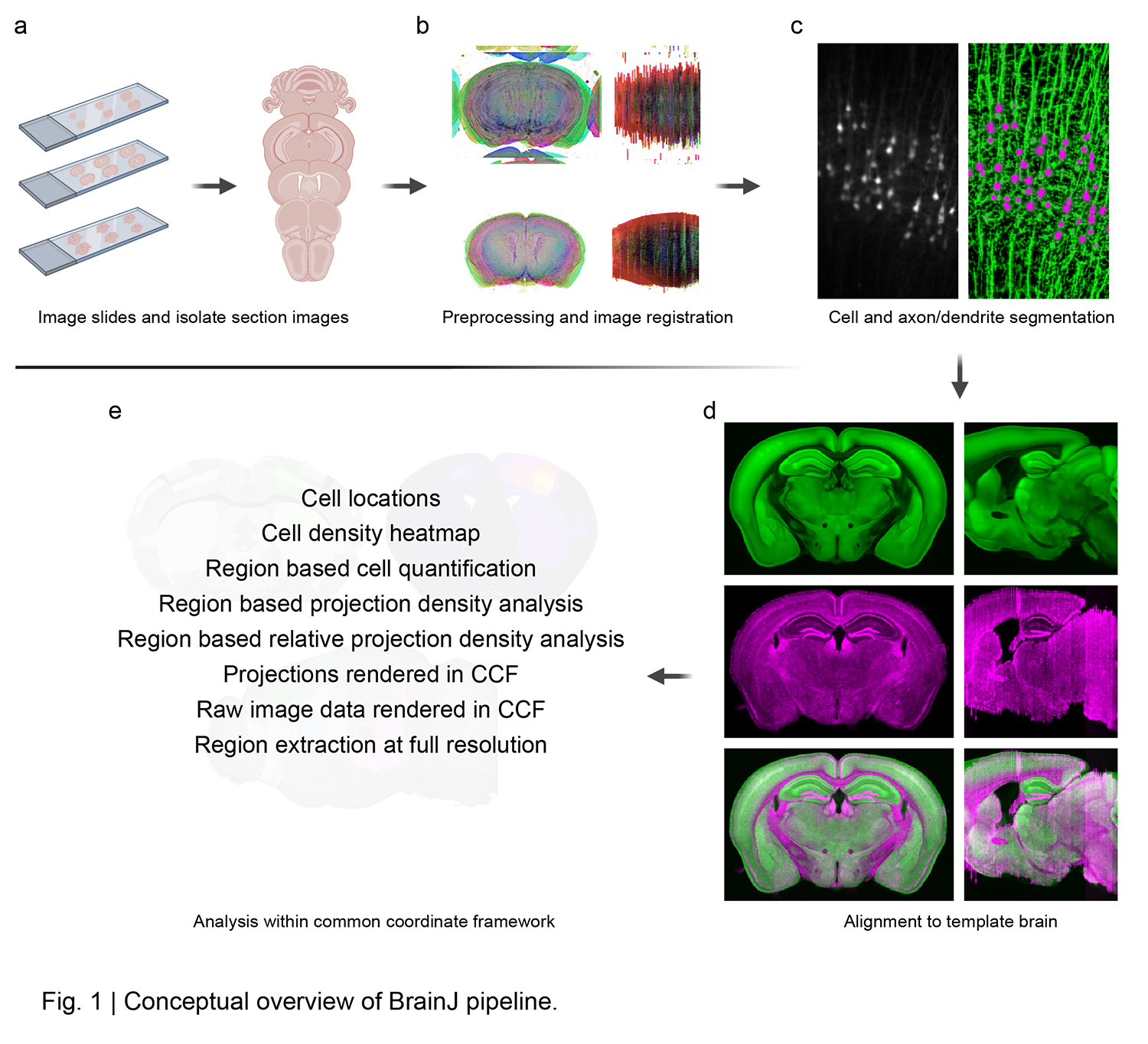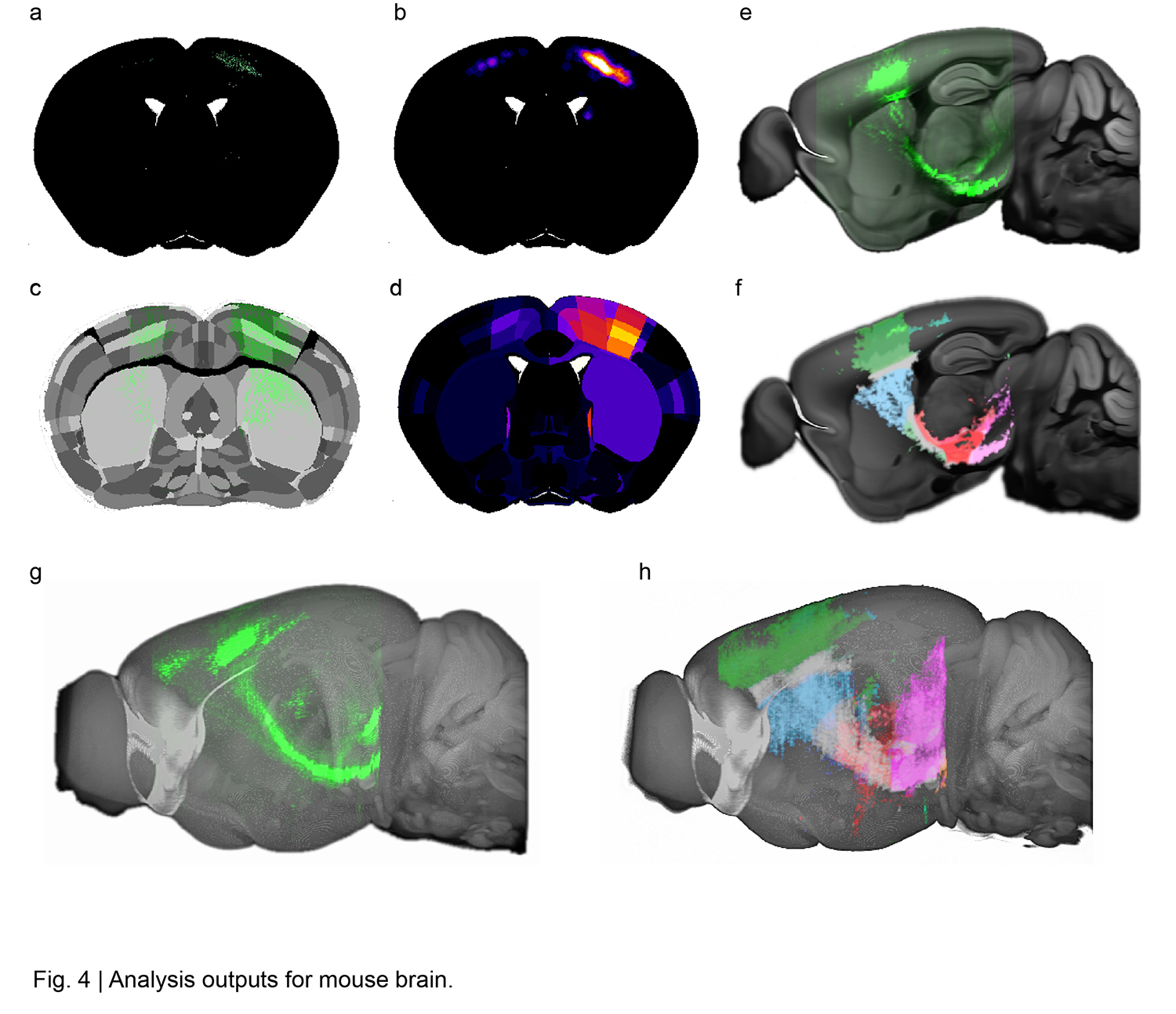An accessible tool for automated brain reconstruction, mesoscale mapping, and cell analysis.
Please read the BrainJ Guide.pdf for step-by-step instructions and troubleshooting.
A recorded workshop on using BrainJ for quantitive analysis of cells and projections, as well as analysis of probe and GRIN lens placement, is now available on YouTube.
We also support the enhanced and unified mouse brain atlas.
Reconstructing serial tissue sections into whole brains and analyzing them within a common coordinate framework is an essential capability for the discovery of novel circuits and studies in neuroscience. Many existing solutions require coding experience, commercial software, or labor-intensive interaction and annotation for researchers. With an emphasis on accessibility and automation, BrainJ enables high-throughput analysis of serial tissue sections imaged using confocal or widefield techniques. Developed in Fiji, our approach leverages freely available tools for machine learning pixel classification for cell detection and mesoscale mapping of axons and dendrites. With a simple graphical user interface, this approach is easy to deploy and use, requiring no coding experience and minimal manual intervention to process multiple datasets. Our approach is extensible to any project requiring serial section reconstruction and atlas-based analysis and allows a typical whole-brain dataset to be reconstructed and analyzed within 2-4 hours.
- Install Fiji/ImageJ
- Install BrainJ - Download BrainJ.jar and copy into your ImageJ plugins folder
- Install MultiStackReg - Download and copy into your ImageJ plugins folder
- Install TurboReg
- Install Elastix 5.0.0)
- Install Ilastix 1.3.3post3
- Download the required atlas files and Ilastik project
- Store the atlas files folder somewhere on your computer. The pipeline will use the files in this folder to perform analysis and generate visualizations
If you use BrainJ please cite our publication:
An amygdala circuit mediates experience-dependent momentary exploratory arrests. Botta et al. Cell 2020
- See the BrainJ Guide.pdf for step-by-step instructions
- Badly damaged tissue may prevent registration and alignment to atlas.
- Requires sections spanning at least 2-3mm in the anterior-posterior axis.
If you are reconstructing and analyzing spinal cords - see our new tool SpinalJ for the mouse spinal cord.**
For tissue sections:
For whole brain data:

